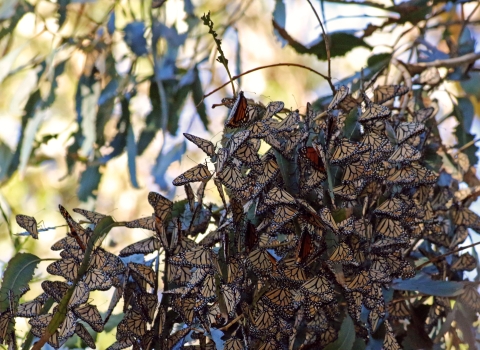Secretary of the Interior Ken Salazar released the following statement Saturday, Feb. 20, on the passing of Sam Hamilton, the Director of the Fish and Wildlife Service:
"The Interior Department family has suffered a great loss with the passing of Sam Hamilton. Sam was a friend, a visionary, and a professional whose years of service and passionate dedication to his work have left an indelible mark on the lands and wildlife we cherish. His forward-thinking approach to conservation - including his view that we must think beyond boundaries at the landscape-scale- will continue to shape our nation's stewardship for years to come. My heart goes out to Sam's family, friends, and colleagues as we remember a remarkable leader and a compassionate, wise, and eternally optimistic man."
Assistant Secretary for Fish and Wildlife and Parks Thomas Strickland released the following statement:
"We are all saddened by the loss of our dear friend and colleague Sam Hamilton. A dedicated Fish and Wildlife Service employee for more than 30 years, Sam brought more than just a wealth of experience to the job, he brought courage and outstanding leadership. The Department of the Interior will miss him greatly."
Sam is survived by his wife Becky, his sons Sam Jr. and Clay and a grandson, Davis all of Atlanta, GA.
Bio of Sam Hamilton:
On September 1, 2009, Sam D. Hamilton was sworn-in as the 15th Director of the U.S. Fish and Wildlife Service, the nation's principal Federal agency dedicated to the conservation of fish and wildlife and their habitats. Hamilton brings to the position over 30 years of experience with the Service, beginning when he was 15 years old working as a Youth Conservation Corps member on the Noxubee National Wildlife Refuge in Mississippi. Prior to his appointment as Director, he served as Regional Director of the agency’s Southeast Region in Atlanta, Georgia. As head of the Southeast Region, made up of ten states and Caribbean, he provided oversight and management of a $484 million budget and a 1,500-person work-force dedicated to protecting more than 350 federally listed threatened and endangered species and operating 128 national wildlife refuges.
Throughout his career, Hamilton has exhibited outstanding leadership and has fostered creative and innovative solutions to the challenges facing wildlife conservation. In the Southeast Region, he supported efforts leading to the establishment of a carbon sequestration program that has helped biologists to restore roughly 80,000 acres of wildlife habitat. His emphasis on partnership activities has bolstered the Service’s fisheries program and helped establish the Southeast Aquatic Resources Partnership to restore vital aquatic habitats across the region.
Hamilton provided key leadership and oversight to the Interior Department’s restoration work in the Everglades, the nation’s fabled “River of Grass”, and the largest ecosystem restoration project in the country. He oversaw the extensive recovery and restoration efforts required following Hurricanes Katrina and Rita, which devastated coastal wetlands, wildlife refuges, and other wildlife habitat areas along the Gulf of Mexico.
Hamilton remained a strong advocate for the National Wildlife Refuge System, comprised of 550 units and encompassing 150 million acres of protected habitat. Throughout his career he supported the expansion of existing refuges and the addition of new refuges as an essential step in providing for America’s wildlife heritage.
Earlier in his career, Hamilton served as Assistant Regional Director of Ecological Services in Atlanta and as the Service’s Texas State Administrator in Austin. Hamilton graduated from Mississippi State University with a Bachelor of Science degree in biology in 1977.
Sam strongly believed no single entity, whether Federal, State, or private, can ensure the sustainability of the nation’s fish and wildlife resources working independently, and continues to work toward building collaborative partnerships that allow for the development of ideas and solutions that are greater than any one entity, working on its own, can accomplish.


